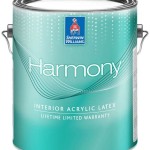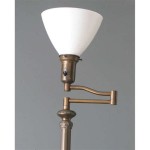The Essential Aspects of an Indoor Earthworm Farm
Establishing a successful indoor earthworm farm requires careful consideration of specific aspects that impact the well-being of the worms and the efficiency of the operation. Here are some essential factors to keep in mind:
1. Worm Species Selection
Choosing the appropriate earthworm species is crucial. Red wigglers (Eisenia fetida) are a popular choice due to their adaptability, composting ability, and ease of maintenance. Other suitable species include blue wigglers (Eisenia andrei) and Indian nightcrawlers (Perionyx excavatus).
2. Housing and Bedding
Provide a suitable home for your worms, such as a plastic storage bin with holes for aeration. The bedding material, typically a combination of shredded newspaper, cardboard, or organic matter, creates a moist and nutrient-rich environment where worms thrive.
3. Feedstock Management
Feed your worms a steady supply of organic food scraps. Avoid acidic materials like citrus fruits. Ideal feedstock includes fruit and vegetable peelings, coffee grounds, and cardboard. Balance the diet with occasional additions of minerals such as oyster shells or crushed eggshells.
4. Moisture and Temperature Control
Earthworms require a moist environment with a humidity level of around 70-80%. Mist the bedding regularly to maintain humidity. Optimal temperature for worm activity ranges between 55-75°F (13-24°C). Ensure adequate ventilation to prevent overheating or excessive moisture.
5. Worm Harvesting
Harvesting mature worms for various uses involves separating them from the vermicompost (worm castings). Techniques include light and moisture manipulation, allowing worms to move towards a light source or moist area while leaving behind the castings.
6. Vermicompost Utilization
Vermicompost, the nutrient-rich castings produced by earthworms, is a valuable organic fertilizer. It improves soil structure, enhances plant growth, and reduces fertilizer dependency. Use vermicompost for gardening, houseplants, or as a compost tea to water plants.
7. Pest and Disease Management
Monitor your worm farm regularly for pests and diseases. Common pests include mites and fruit flies. Minimize pest infestations by maintaining hygiene and removing uneaten food scraps promptly. Ensure proper drainage to prevent disease outbreaks caused by excess moisture.
8. Sustainability and Odor Control
Composting with earthworms is an environmentally friendly and sustainable practice that reduces waste and conserves natural resources. Properly managed worm farms control odors by maintaining a balanced ecosystem and preventing anaerobic conditions.
How To Build A Worm Farm Help Your Garden And The Environment Abc News

How To Make A Worm Bin For Less Than 5 Easy Diy Composter

Over The Garden Gate Dirt On Raising Earthworms For Vermicompost

Diy Worm Composting Bin How To Do It Right Uncle Jims Farm

How To Set Up Your Diy Worm Bin Uncle Jim S Farm

Worm Farming For Beginners How To Compost Indoors With A Diy Farm Or Vermi Composter

How To A Start Worm Farm At Home Learn About Vermiculture

Childrens Worm Farm Kids Wormery For Earthworms
:max_bytes(150000):strip_icc()/vermicomposting-setting-up-a-worm-bin-2539503-hero-940852459d904283b553e44f156c102c.jpg?strip=all)
How To Start A Worm Bin And Vermicomposting

Small Scale Indoor Worm Composting Farming Secrets








